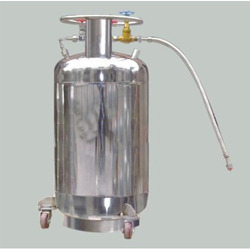A serious workplace injury can change the life of not only an individual but also of his family, friends, communities and coworkers. The suffering faced by the injured and the related people can never be measured, because of all the major crises witnessed by them due to such injuries. Therefore, it becomes very necessary for the workplaces everywhere to consider various safety measures, and the workers or the employees to apply all those, for avoiding any kind of injuries.

And so, as per the contemplation of the above scenario, this article mentions and discusses in detail the safety instructions that must be considered and applied while working with the liquid nitrogen containers or tanks.
Liquid Nitrogen, which is scientifically identified as LN2, is majorly used in the sectors like manufacturing, medical, restaurants, agriculture and many other. This liquefied gas is excessively cold at -195°C (-320°F), and, if it vaporizes, then it can produce an extremely cold gas. These attributes of liquid nitrogen have the ability to cause major injury to the individual and damage to the property. Therefore, one must be careful and consider the safety instructions that are discussed below when working with liquid nitrogen and liquid nitrogen tanks.
• Liquid nitrogen is so cold that it can freeze the skin of an individual instantaneously. Therefore, an individual must not allow anything cooled in liquid nitrogen to encounter his or her bare skin and wear heavy leather, insulated gloves and goggles, if working with it.
• It is mandatory to use tongs or forceps, for removing straws or canes from the liquid nitrogen tanks.
• While working with open liquid nitrogen containers, it is necessary to wear boots and pants (or a full-length apron), which should be outside the boots to prevent the liquefied gas from getting into them.
• One should never seal the liquid nitrogen tanks with a tight-fitting plug, because it prevents the venting of the nitrogen gas or the pressure build up which can lead to the explosion of the tank. Use only the original neck tube stopper that is furnished with the tank, to seal the containers.
• The liquid nitrogen tanks must be stored and used only in fully ventilated areas. Because though nitrogen gas is not toxic, it still has the ability to displace the oxygen in the air and cause suffocation.
• The containers should never be transported in a closed vehicle.
• A person when working with liquid nitrogen tanks must make sure to store them in a clean and dry area. Also, he must take care that anything like moisture, caustic cleaners, etc., which may cause corrosion should be removed at once.
• The containers must be washed with plain water or mild detergent and then wipe dry. Moreover, they must be stored in an upright position to prevent spillage.
• The liquid nitrogen should never be overfilled in the containers. It is advisable to check the level of liquid nitrogen in the containers or tanks at least once in a week and not allow it to get lower than 5 inches.
These were some of the safety instructions that must be followed while handling the liquid nitrogen containers to avoid major injuries or damages, and safeguard the surroundings from baring any loss.
